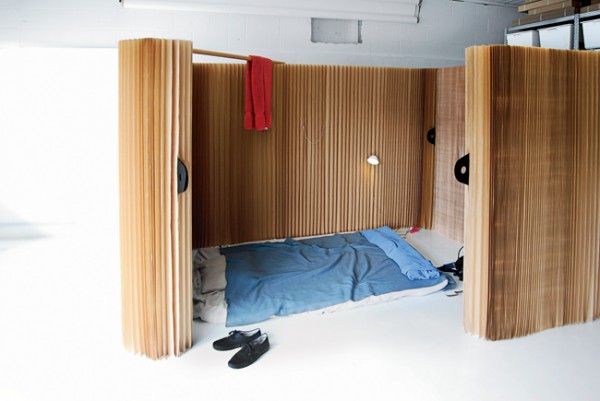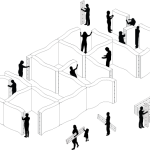Softshelter
Vancouver-based studio Molo Design came up with their concept for an easily adaptable shelter in July of 2011. Their “softshelter” system relies on stretchable expanses of kraft paper that form soft, pliable grids of personal space. These grids click together with magnets or collapse into a series of flat, stackable forms when decommissioned. Intended to be adjusted for use in disaster relief, as homeless shelters and as temporary voting booths and clinics, softshelter also conveniently became a temporary home for David Ullock, an assistant at Molo Design, who found himself in need of a place to stay during the prototyping of the project, according to Architectural Record.
[All images courtesy the architects, via Architectural Record]
For four months, Ullock turned the Molo Design studio into an ad hoc live/work loft using the firm’s softshelter module. The experiment “reinforced the importance of [the design’s] ability to adjust to changing conditions,” says Todd MacAllen, a partner in the firm. It also led to the development of new details, including a lamp, a Tyvek saddle to hang belongings and a handle that attaches to any wall and turns it into a sliding door.
Molo took pride in the design’s conceptual flexibility, creating an object that can find a place in high-end retail stores and gallery exhibits as well as at sites of humanitarian relief efforts. Though Ullock’s willingness to “live” the design is a marketable anecdote, hopefully, we won’t be seeing the development of a new trend of architects shacking up in the office.
VIA: architizer.com






